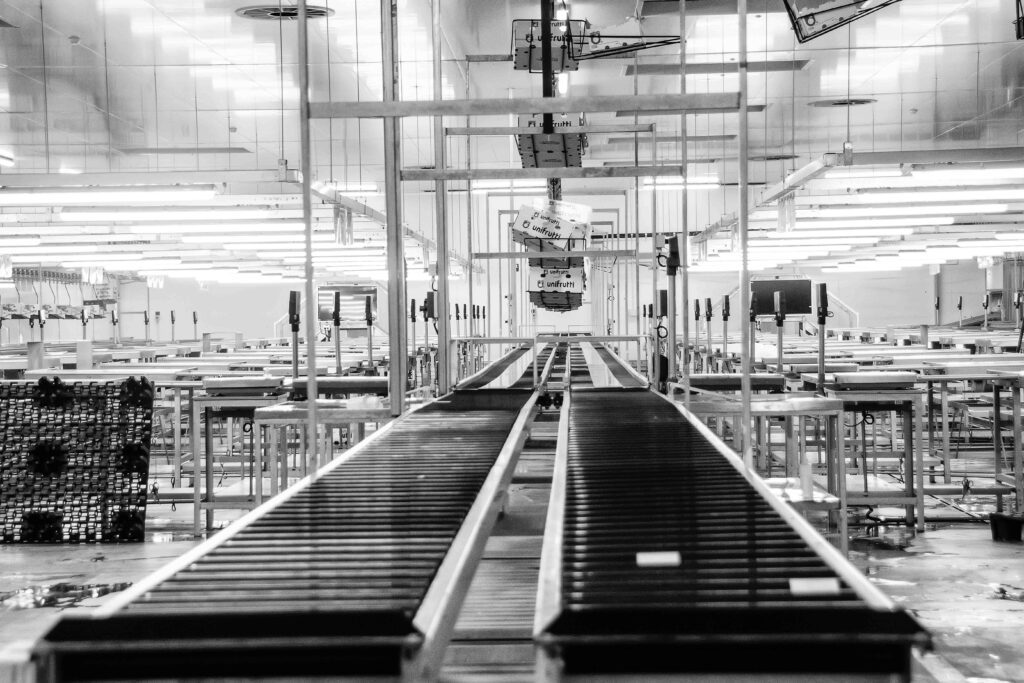
A conveyor machine is a mechanical device commonly used in industries to transport materials from one point to another. It consists of a belt or chain that moves continuously, allowing for the efficient transfer of goods. These machines are widely used in manufacturing plants, warehouses, and distribution centers to streamline operations and increase productivity. The conveyor machine can handle a variety of materials, ranging from small, lightweight objects to heavy, bulky items. It can be customized to meet specific requirements, such as incline or decline angles, speed control, and length adjustments. With the advancements in technology, conveyor machines now come with automated features, such as sensors and computerized controls, to ensure smooth and reliable operation. In addition to its convenience and efficiency, the conveyor machine also improves worker safety by reducing the need for manual lifting and carrying of heavy loads. Overall, the use of conveyor machines has revolutionized the way materials are handled and transported in various industries.
Conveyor machines play a vital role in various industries by efficiently transporting goods and materials from one point to another. With their ability to automate the movement of items, these machines have revolutionized the production and distribution processes across different sectors. In this blog post, we will dive into the world of conveyor machines, exploring their functionality, types, and benefits. Whether you are a business owner looking to optimize your operations or simply curious about these essential devices, this comprehensive guide will provide you with valuable insights.
Outline:
1. What is a conveyor machine?
- Definition and basic functionality
- Importance in industrial settings
2. What are the different types of conveyor machines?
a. Belt conveyors
- Overview of belt conveyor systems
- Applications and advantages
b. Roller conveyors - Overview of roller conveyor systems
- Applications and advantages
c. Screw conveyors - Overview of screw conveyor systems
- Applications and advantages
d. Chain conveyors - Overview of chain conveyor systems
- Applications and advantages
3. How do conveyor machines work?
- Explanation of the conveyor belt mechanism
- Components and their roles
- Types of motion in conveyor systems
4. What are the benefits of using conveyor machines?
- Increased efficiency and productivity
- Cost-effectiveness and reduced labor requirements
- Improved safety and reduced manual handling risks
5. How to choose the right conveyor machine for your needs?
- a. Analyzing the requirements of your operations
- b. Considering factors such as load capacity, speed, and material compatibility
- c. Evaluating the layout and space availability
- d. Assessing maintenance and operational costs
6. How to maintain and troubleshoot conveyor machines?
- a. Regular cleaning and inspection
- b. Lubrication and preventive maintenance
- c. Common issues and troubleshooting tips
Conclusion
Conveyor machines have become an indispensable part of numerous industries, streamlining processes and enhancing productivity. Understanding the different types, functionality, and benefits of these machines is crucial for businesses looking to optimize their operations. By carefully selecting the right conveyor machine and implementing proper maintenance practices, companies can enjoy increased efficiency, reduced costs, and improved safety. Whether it’s in manufacturing, warehousing, or logistics, the utilization of conveyor machines continues to shape the landscape of modern industries.
